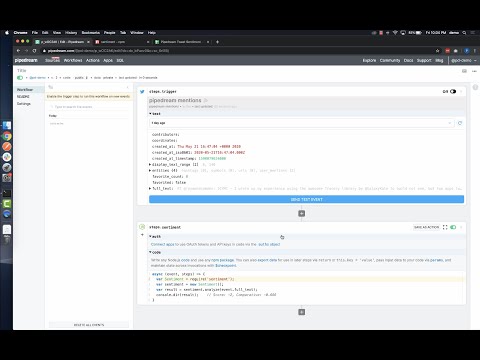What do you want to automate
with Calendly and Google Sheets?
Prompt, edit and deploy AI agents that connect to Calendly, Google Sheets and 3,000+ other apps in seconds.
Trusted by 1,000,000+ developers from startups to Fortune 500 companies
Popular Ways to Connect Calendly with Google Sheets#
Popular Calendly and Google Sheets Triggers#
Popular Calendly and Google Sheets Actions#
Creates a single-use scheduling link. See the documentation
Add a single row of data to Google Sheets. See the documentation
Marks an Invitee as a No Show in Calendly. See the documentation
Add multiple rows of data to a Google Sheet. See the documentation
Gets information about an Event associated with a URI. See the documentation
Overview of Calendly#
The Calendly API lets you craft bespoke scheduling experiences within your apps or automate repetitive tasks involving your calendar. With this API, you can read event types, set up webhooks for new events, list invitees, or create and cancel invitation links programmatically. Pipedream's serverless platform takes the heavy lifting out of integrating Calendly with 3,000+ other apps, enabling you to focus on creating workflows that save time, enhance productivity, and eliminate scheduling errors.
Connect Calendly#
import { axios } from "@pipedream/platform"
export default defineComponent({
props: {
calendly_v2: {
type: "app",
app: "calendly_v2",
}
},
async run({steps, $}) {
return await axios($, {
url: `https://api.calendly.com/users/me`,
headers: {
Authorization: `Bearer ${this.calendly_v2.$auth.oauth_access_token}`,
},
})
},
})
Overview of Google Sheets#
The Google Sheets API allows for the creation, reading, updating, and deletion of data within Google Sheets, enabling a robust platform for spreadsheet management and data manipulation. Through Pipedream, you can craft serverless workflows that respond to various triggers, such as webhook events, emails, or scheduled times, to interact with Google Sheets. This synergy can automate reporting, synchronize data across applications, manage inventory, track leads in a CRM, or even conduct survey analysis by updating and retrieving sheet data on the fly.
Connect Google Sheets#
import { axios } from "@pipedream/platform"
export default defineComponent({
props: {
google_sheets: {
type: "app",
app: "google_sheets",
}
},
async run({steps, $}) {
return await axios($, {
url: `https://www.googleapis.com/oauth2/v1/userinfo`,
headers: {
Authorization: `Bearer ${this.google_sheets.$auth.oauth_access_token}`,
},
})
},
})
Related Videos#



Community Posts#


